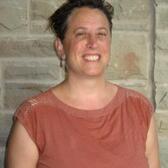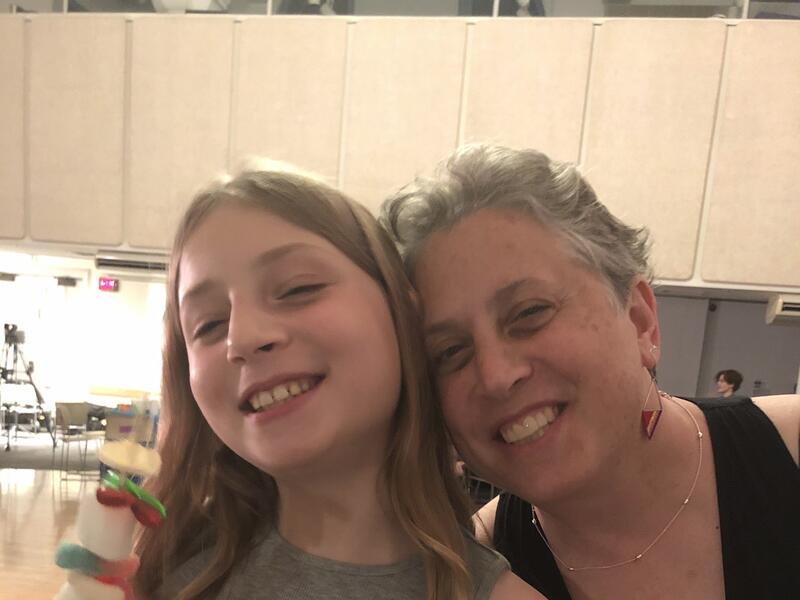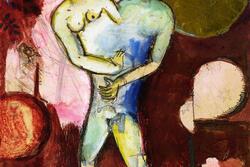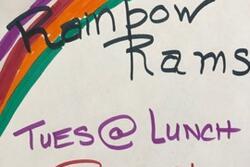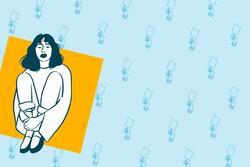I Taught at a Jewish School Before I Came Out. Twenty Years Later, I Went Back.
“I love mermaids, but my parents don’t like this about me.”
This statement was written by my fourth-grade student Jared (not his real name) at the Jewish day school where I taught in the early 2000s. Jared was an effervescent little boy who loved to sing and act. His former teacher told me that he had such a powerful crush on another boy, he had asked for them not to sit together because it was too distracting for him. His parents, both reserved people, didn’t know what to make of him. They didn’t tell me they were upset by his gender non-conforming ways, but they must have somehow shown their discomfort for him to write something like that in his journal.
I could relate to Jared. I had grown up Modern Orthodox in the 1980s and 1990s and came out to my parents at eighteen. Their reaction was not immediately positive. My mother cried and my father expressed his regret that I couldn’t be a bride one day. They both told me that if I had another option, I should reconsider. But after taking some time to adjust and joining a PFLAG group at a local Reform synagogue, they came around to accepting me and my partner.
I wanted to support Jared, but I wasn’t sure it was safe to come out to my students. As a new teacher in 2001, I feared the judgement of parents, and I wasn’t sure the administration would support me either.
After attending a workshop on homophobia, I summoned the courage to talk to the school’s vice principal, an Orthodox rabbi, about my interest in including some LGBTQ+-themed lessons. For example, I wanted to share a book about same-sex families to accompany the family history unit we’d just started.
This rabbi (who is no longer connected to the school) responded in a way that still surprises me twenty years later. He told me that talking about same-sex families would “confuse” the students and that Jewish law did not permit same-sex relationships. He said he encouraged compassion towards gay Jews and those questioning their sexual orientation, but he thought my students were much too young for these lessons.
A few months later, I was able to sneak in some anti-homophobia content when one of my students was being bullied and called “gay” by his peers because he wore an earring. I took the opportunity to do a lesson on name-calling and unpacked what homophobic slurs meant. It wasn’t exactly the full LGBTQ+ lesson I had envisioned, but it was something.
Still, I stayed closeted and didn’t share personal details with my students or their parents. It especially stung when my co-teacher got engaged and was openly celebrated by the parents and my colleagues, whereas when my partner and I moved in together, I shared it with no one.
Four years later, when I was considering getting pregnant, I decided I needed to leave the school. I feared the questions from parents once it became obvious I was pregnant—they weren’t aware of my partner or of my sexual identity, and I didn’t want to have to explain about using a donor. I had been thinking of pursuing a master’s degree in social work anyway, so in 2009, I left teaching and went back to school to become a social worker.
Fifteen years later, sick of virtual counseling during the pandemic, I returned to teach at the same school. This time, I vowed I would be out. I was more comfortable with being Jewish and queer, I’d been with my partner for fifteen years, and our daughter was now ten years old. I wanted to be open about my life with my students.
I was also pleasantly surprised by how much things had transformed on the LGBTQ+ front since the early 2000s. Gay marriage was legal in Canada, where I lived, and non-binary and trans identities were much more accepted. There had been progress in the Jewish community, too. Reform rabbis performed gay marriages, and although Orthodox Judaism still did not accept gay relationships, there were increasing calls for Orthodox Judaism to include gay Jews in communal settings. In 2010, several prominent Orthodox rabbis and community leaders signed a statement asserting that gays should be welcomed as full and equal members of Orthodox communities.
Inspired by the progress I saw around me, not long after starting my new teaching position, I taught a lesson on gender and sexual identity, sharing a book about gender identity and the use of they/them pronouns for non-binary people. I also shared the story of Harvey Milk, the first openly gay man elected to public office in California. Milk was a fierce advocate for LGBTQ+ rights, passing anti-discrimination legislation related to housing and employment in the 1970s.
On a more personal note, I told my students my own coming out story and what it was like not to be able to talk about my identity when I taught at the school twenty years ago. I told them about my female partner and ten-year-old daughter. I also told them about my fourth-grade student and his parents’ reaction to his love of mermaids.
The students were curious about my experience coming out to my parents and surprised by their negative reaction. They also wondered why I didn’t refer to my partner as “my wife,” but understood when I explained that we weren’t married. A couple of students shared that they knew several kids who identified as gay or non-binary.
In response to an anonymous letter sent by some of the eighth-grade students requesting that their health classes be more inclusive of diverse gender and sexual identities, I joined a committee that brought in a social worker from The Jewish Family and Child Services to talk about gender and sexual identity. Clearly, students had learned to advocate for themselves and felt comfortable asking for their needs to be met.
The talk went well, and the students asked many respectful and interesting questions. Some were genuinely mystified by non-binary and trans identities and didn’t understand why someone would need to change their actual gender or their pronouns. They didn’t see why we couldn’t simply expand our definitions of ‘male’ and ‘female’ and make them less rigid. There were also one or two students who expressed their discomfort with the content of the lesson. “I like boys,” said one girl. “I know this about myself. Someone is either a boy or a girl. This doesn’t make sense.” But those voices were not the loudest. Overall, students genuinely wanted to learn which words to use and to understand the new terms.
I was impressed that the views expressed by the Orthodox rabbi and rigid ideas about Jewish law no longer governed the school. This felt more in line with the values of the school, which had always billed itself as pluralistic and progressive. It was good to see that openness expanding to include the LGBTQ+ community.
There have been some disappointing moments, too. The gay-straight alliance club we planned on starting never got off the ground, for example. Many people were eager to embrace the queer visibility stickers I brought in, but one of the teachers said she didn’t see the point of putting such obvious symbols on her door, as the students already felt comfortable with diverse sexual identities. At one meeting, a colleague commented that she didn’t think I should talk about gender and sexual identity “too much.”
On the whole, though, I was encouraged by the progress I saw. There was a small group of queer students who seemed comfortable expressing diverse gender identities, using non-binary they/them pronouns, and being themselves. Most teachers tried to use the appropriate pronouns, and it was amazing to hear the students themselves doing so. When it came time for the students to write adaptation of Romeo and Juliet, one pair decided to make the two characters lesbians.
Teaching at the school this time around has been an entirely different experience. It felt good to be able to express all of my intersecting identities openly and not feel at all stigmatized. In the staff room, I could be open about my family and my partner and not worry about derogatory comments.
Earlier this year, I had a lovely discussion with the parents of a current student, whose family attended Pride celebrations each year and who thanked me for addressing issues of gender and sexual identity so openly. Their child had dyed hair, preferred acting and singing to sports, and socializing with girls over boys— and was completely comfortable in his own skin.
I thought back to Jared, my fourth-grade student from twenty years ago. If he was at the school now, I’d like to think he'd comfortable declaring his love of mermaids loudly and proudly.

